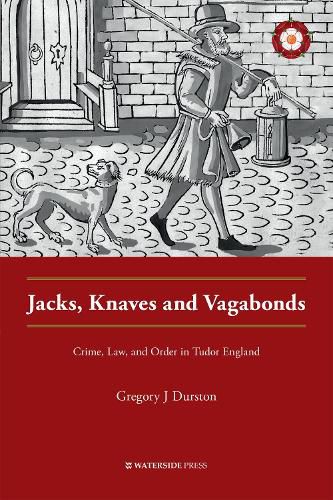Readings Newsletter
Become a Readings Member to make your shopping experience even easier.
Sign in or sign up for free!
You’re not far away from qualifying for FREE standard shipping within Australia
You’ve qualified for FREE standard shipping within Australia
The cart is loading…






This title is printed to order. This book may have been self-published. If so, we cannot guarantee the quality of the content. In the main most books will have gone through the editing process however some may not. We therefore suggest that you be aware of this before ordering this book. If in doubt check either the author or publisher’s details as we are unable to accept any returns unless they are faulty. Please contact us if you have any questions.
Students of English history will have heard how benefit of clergy and the ‘neck verse’ might avoid a hanging, but what of other stratagems such as down-valuing stolen goods, cruentation, chance medley, pious perjury or John at Death (a non-existent culprit blamed by the accused and treated by juries as real); all devices used to mitigate the all-pervading death-for-felony rule. Together with other artifices deployed by courts to circumvent black-letter law the author also describes how poor, marginalised and illiterate citizens were those most likely to suffer unfairness, injustice and draconian punishment. He also describes the political intrigue and widescale corruption that were symptomatic of the era, alongside such diverse aspects as forfeiture of property, evidential ploys, the rise of the highwayman, religious persecution, witchcraft and infanticide crazes. At a time of shifting allegiances - and as Crown, church, judges, magistrates and officials wrestled over jurisdiction, central or local control, ‘ungodly customs’, laws of convenience or malleable definitions - never perhaps were facts or law so expertly engineered to justify or defend often curious outcomes.
$9.00 standard shipping within Australia
FREE standard shipping within Australia for orders over $100.00
Express & International shipping calculated at checkout
This title is printed to order. This book may have been self-published. If so, we cannot guarantee the quality of the content. In the main most books will have gone through the editing process however some may not. We therefore suggest that you be aware of this before ordering this book. If in doubt check either the author or publisher’s details as we are unable to accept any returns unless they are faulty. Please contact us if you have any questions.
Students of English history will have heard how benefit of clergy and the ‘neck verse’ might avoid a hanging, but what of other stratagems such as down-valuing stolen goods, cruentation, chance medley, pious perjury or John at Death (a non-existent culprit blamed by the accused and treated by juries as real); all devices used to mitigate the all-pervading death-for-felony rule. Together with other artifices deployed by courts to circumvent black-letter law the author also describes how poor, marginalised and illiterate citizens were those most likely to suffer unfairness, injustice and draconian punishment. He also describes the political intrigue and widescale corruption that were symptomatic of the era, alongside such diverse aspects as forfeiture of property, evidential ploys, the rise of the highwayman, religious persecution, witchcraft and infanticide crazes. At a time of shifting allegiances - and as Crown, church, judges, magistrates and officials wrestled over jurisdiction, central or local control, ‘ungodly customs’, laws of convenience or malleable definitions - never perhaps were facts or law so expertly engineered to justify or defend often curious outcomes.